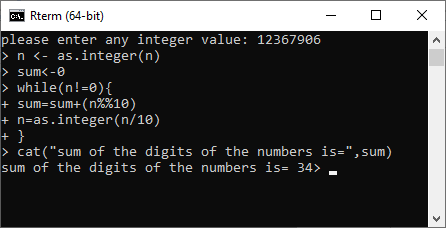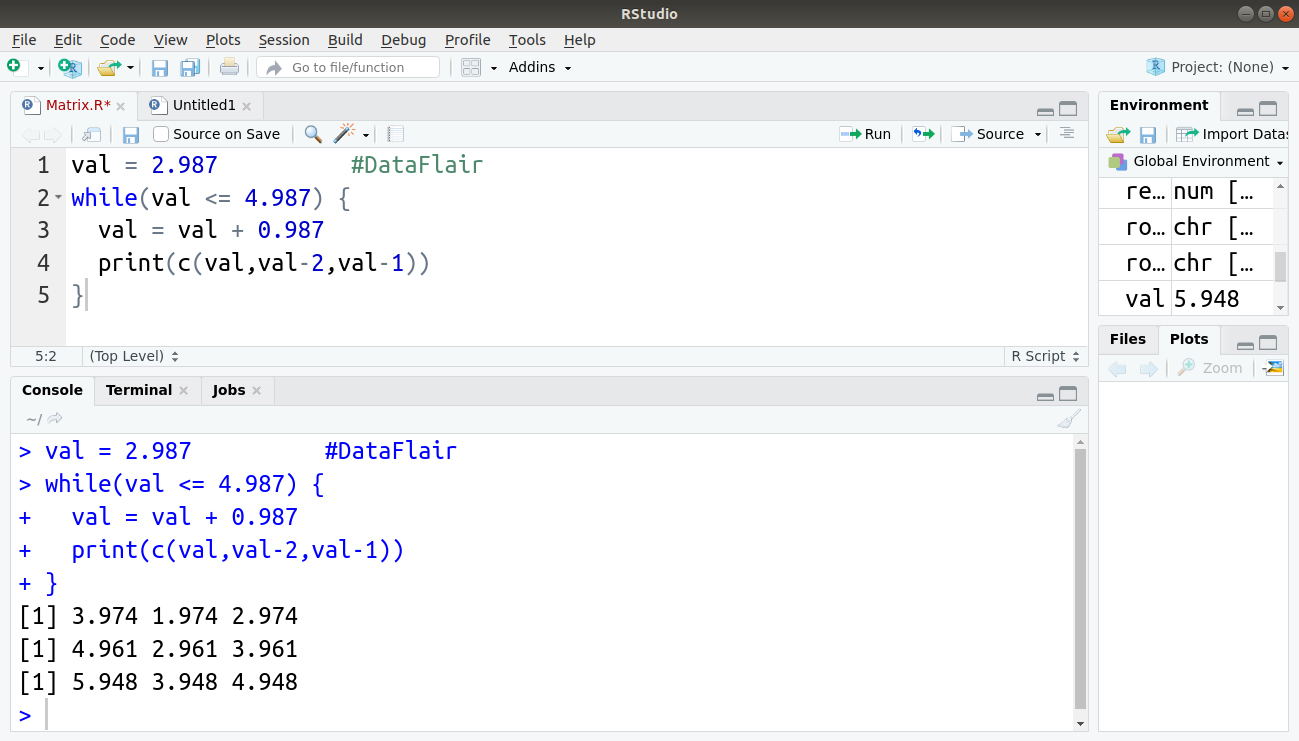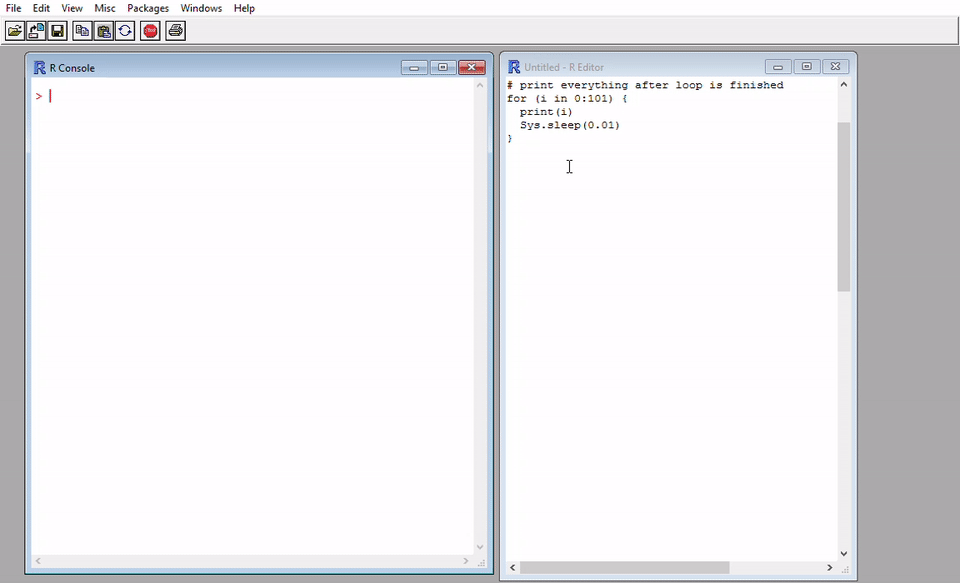

Therefore, you can set up your counter in vector part of the loop like this If you are writing a for-loop inside of a larger construct, the number of times you want to loop could depend on the length of a vector which could change depending on other factors.
#FOR LOOP IN R EXAMPLE HOW TO#
But using apply is best left for another post, we have plenty to tackle just learning how to write a half-way decent loop. But most apply functions are no faster than a well constructed loop (more on well constructed later). There are a couple of functions in the apply family which do avoid R loops and therefore probably are faster than a loop.
#FOR LOOP IN R EXAMPLE CODE#
This is false (at least theoretically), because inside the code for the apply command is a for-loop written in R. Adding a layer of vitriol to this preference for the apply command is the rumor (left over from the S language from which R was derived) that apply is faster than a for-loop. Many R natives would prefer that you use the apply family of functions rather than writing a for-loop (often possible, but not always). The upshot here is that C is much faster than R and if you can do get what you seek in R by applying a command to a vector it’s typically a good idea to do so.ģ) R is a functional language, the result of that is the flow control and programming is somewhat de-emphasized. Underneath the R code you just executed is blazingly fast C code running loops to get you the answer. When you set up a vector in R, you can easily do operations on the entire vector (this is the vectorization that gets discussed so frequently in R literature).

And there are lots of workarounds for users of big data in R.Ģ) R itself is primarily written in C (or some variant like C++).

Computers are fast and even slow looping will likely accomplish what you need in a reasonable length of time unless you are working with a really huge dataset. The fact is, for many people, it doesn’t matter. Users of almost any other language can just bring up looping speed when they want to get under R users’ skins. This fact puts lots of R users on the defense from the very beginning. Why is this controversial?ġ) Loops are slow in R. This will result in foo.squared containing only one value – the last value calculated by the loop. You are missing your square brackets with a counter on the left side of the equal sign. About 45 minutes later I finally figured out what was wrong with my loop.ĭid you forget to subscript your new vector? Possibly the inside of your loop looks like this If you are having problems with your loop, it could be one of these silly mental slips.ĭid you reset your vector inside the loop? Is it possible you put a new.vector = NULL inside the loop instead of before it? Yeah, I’ve done it. However the 5th element of foo will be foo, which is equal to 9. For example when we’ve looped through the instructions 4 times, the next loop will be loop number 5 (so i=5). If you are new to programming it is sometimes difficult to keep straight the difference in the number of loops you are on versus the value of the element of vector being operated on. For our new vector foo.squared, the ith element will equal the number of loops that we are on (for the first loop, i=1 second loop, i=2). The counter we set up is ‘i’ (but you can put whatever variable name you want there). This code says we’ll loop 50 times( 1:50). So, we set up an empty vector to add stuff to later (note that this isn’t the most speed efficient way to do this, but it’s fairly fool-proof). R doesn’t like being told to operate on a vector that doesn’t exist yet. If the creation of a new vector is the goal, first you have to set up a vector to store things in prior to running the loop. I’m going to set up a loop to square every element of my dataset, foo, which contains the odd integers from 1 to 100 (keep in mind that vectorizing would be faster for my trivial example – see below). Use the for loop if you want to do the same task a specific number of times. ?'for' will get you the help page but it is by no means exhaustive.) So, at the request of Sam, a faithful reader of the Paleocave blog, I’m going to throw my hat into the ring and brace myself for the potential onslaught of internet troll wrath. In fact, even searching for help within R is not easy and not even that helpful when successful ( ?for won’t get you anywhere. I was astounded by the lack of useful posts when I googled “for loops in R” (the top return linked to a page that did not exist). And, to top it off, good help is hard to find. There may be no R topic that is more controversial than the humble for-loop.


 0 kommentar(er)
0 kommentar(er)
